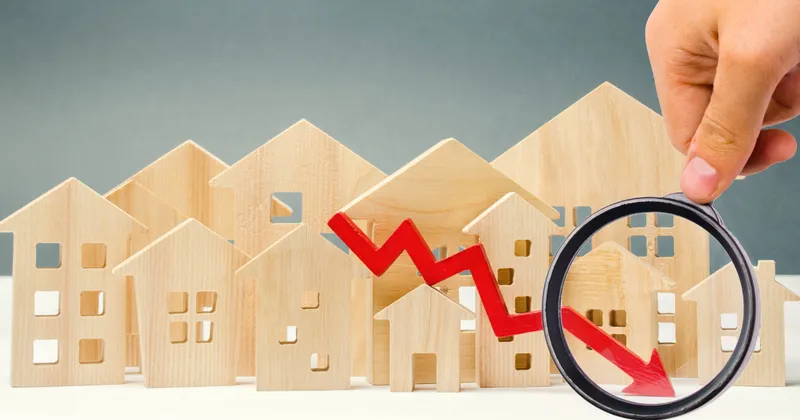With mortgage rates experiencing a decline, homeowners across the country are considering whether now might be the ideal time to refinance their homes. The idea of potentially lowering your monthly payments, securing a better interest rate, or even paying off your mortgage sooner is undeniably appealing. But refinancing isn’t just a matter of grabbing the lowest rate available—it requires a careful evaluation of your financial goals, current market conditions, and the details of your existing mortgage. In this article, we'll explore whether refinancing makes sense for you, how to calculate potential savings, and what factors to consider before making this important financial decision. Follow us here at Why Do We Have Leap Day?
Get a Sense of How Much You Could Save
One of the most compelling reasons to refinance your mortgage is the possibility of significant savings over the life of the loan. If interest rates have dropped since you first took out your mortgage, refinancing at a lower rate could lead to lower monthly payments, which frees up more of your income for other expenses or savings. But the real question is, how much could you save?

To get a rough estimate, start by comparing your current interest rate to the current market rates. Even a small reduction in your mortgage rate—say, a drop from 4.5% to 3.5%—could result in substantial savings over time. You can use an online mortgage calculator to estimate how much your new monthly payment might be, as well as how much interest you’ll save over the life of the loan. Keep in mind that the amount you save will depend on factors like the size of your mortgage and how much longer you have to pay it off.
However, it’s essential to factor in the closing costs of refinancing, which can range from 2% to 5% of the loan amount. If you're planning to move in the next few years, the upfront costs might outweigh the long-term savings. In that case, refinancing may not be the best option.
Related: GenZ Scandi Summer Trend Fresh Home Decor Ideas for a Stylish Season
Related: Bottega Veneta Just Dropped a Collection of Iconic Gen Z Animal Beanbag Chairs
Shop Around for the Best Rate
When it comes to refinancing, shopping around is crucial. Interest rates can vary from lender to lender, so it’s worth comparing offers from several different financial institutions. Even a slight difference in interest rates or fees can translate into significant savings over the life of your loan. Don’t just focus on the interest rate alone—be sure to ask about closing costs, points, and any other fees associated with the refinance.

Many homeowners make the mistake of sticking with their original lender when refinancing, assuming it will be easier or faster to work with a lender they already know. While that might seem convenient, you could be leaving money on the table by not comparing other offers. Online lenders, credit unions, and traditional banks might all have different rates or terms, so it’s worth putting in the effort to see which lender can offer you the best deal.
Additionally, some lenders offer “no-cost” refinancing, where closing costs are rolled into the loan rather than being paid upfront. While this may sound like an attractive option, keep in mind that it usually results in a slightly higher interest rate, so you’ll need to weigh whether the convenience is worth the extra cost over time.
One Possible Alternative: A Mortgage Reset
If you’re not ready to commit to a full refinance but still want to take advantage of lower mortgage rates, a mortgage reset might be an option to consider. A mortgage reset allows you to adjust your current loan’s interest rate without going through the full refinancing process. This option is typically available for adjustable-rate mortgages (ARMs) but can also apply to some fixed-rate loans.
The advantage of a mortgage reset is that you don’t have to pay the high closing costs associated with refinancing, but you still get to benefit from a lower interest rate. It’s a simpler process, and it could be a good option for homeowners who don’t want to extend their loan term or go through the hassle of refinancing. However, mortgage resets aren’t available for all types of loans, so it’s important to check with your lender to see if this is an option for you.
Refinancing Means a New Loan with New Possibilities
When you refinance your mortgage, you're essentially paying off your old loan and taking out a new one. This opens up several possibilities for homeowners, including the opportunity to change loan terms, switch from an adjustable-rate mortgage to a fixed-rate mortgage, or even cash out some of the equity you’ve built up in your home.
One of the biggest decisions to make when refinancing is whether to shorten or extend your loan term. Some homeowners choose to refinance into a shorter term, such as a 15-year mortgage, to pay off their loan faster and save on interest. Others prefer to extend their term back to 30 years to reduce their monthly payments, especially if their financial situation has changed or they want to free up more cash flow for other expenses.
If you have an adjustable-rate mortgage and you’re worried about rising interest rates, refinancing into a fixed-rate mortgage could provide more stability. With a fixed-rate loan, your interest rate remains constant over the life of the loan, which can provide peace of mind and protection against future rate hikes. However, if you’re planning to sell your home shortly, sticking with an ARM might make more sense, as it typically offers lower initial rates.
Consider the Loan Term You Want
Choosing the right loan term is a critical decision when refinancing. The loan term directly affects your monthly payments, the amount of interest you’ll pay over time, and how quickly you can build equity in your home. A shorter loan term, such as 15 or 20 years, will typically come with a lower interest rate and allow you to pay off your mortgage faster, but it also means higher monthly payments.
On the other hand, extending your loan term back to 30 years can reduce your monthly payments, giving you more financial flexibility. However, it’s important to remember that a longer loan term means you’ll pay more interest over the life of the loan. Before deciding on a loan term, consider your financial goals, how long you plan to stay in your home, and your ability to comfortably manage higher or lower payments.
Figure Out When to Jump
Timing is everything when it comes to refinancing. Mortgage rates fluctuate based on various economic factors, so keeping an eye on market trends can help you determine the best time to refinance. If rates are falling and you can secure a lower rate than your current mortgage, refinancing could make sense. However, if rates are projected to rise shortly, locking in a lower rate sooner rather than later might be the smarter move.
In addition to watching interest rates, it’s also important to consider your financial situation. Are you planning to stay in your home long enough to recoup the closing costs? Can you comfortably afford the monthly payments on a shorter loan term? Are there any upcoming changes in your income or expenses that could impact your ability to manage a new mortgage? Refinancing can offer significant benefits, but only if the timing aligns with both market conditions and your financial goals.
Conclusion
Refinancing your mortgage when rates drop can be a savvy financial move, but it requires careful consideration of your current loan, plans, and overall financial health. By calculating how much you could save, shopping around for the best rate, and weighing the pros and cons of different loan terms, you can make an informed decision that aligns with your financial goals. Whether you opt for a traditional refinance or explore alternatives like a mortgage reset, the key is to act strategically and ensure that the decision makes sense both now and in the long term.